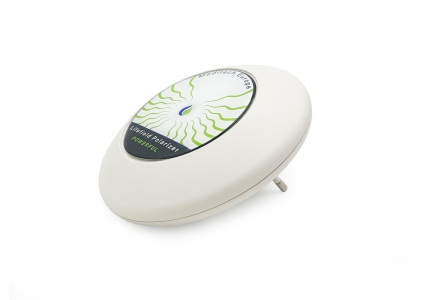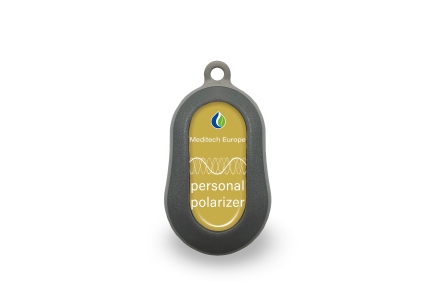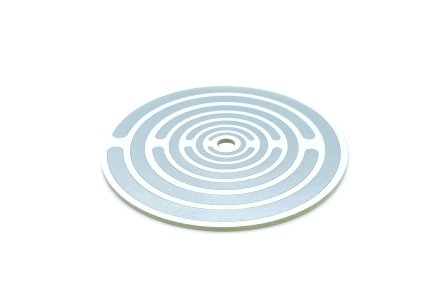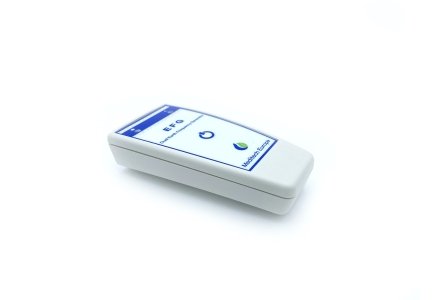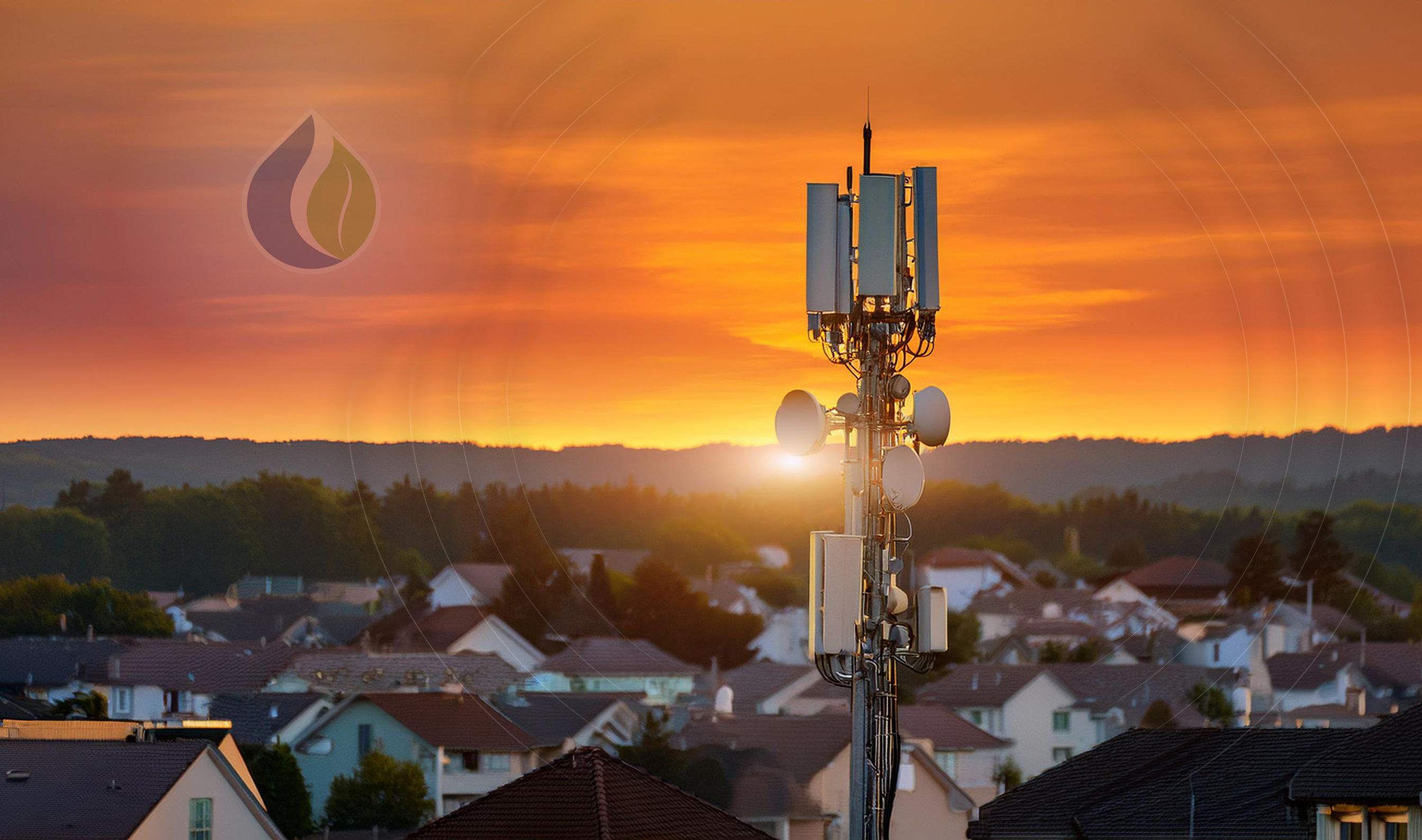
Electromagnetic radiation is all around us and comes from the sun, the earth and from devices we use every day, such as cell phones, tablets and WiFi routers. While these technologies make our lives easier and connected, the constant exposure to electromagnetic radiation is raising more and more questions about possible effects on our health. In this blog, we explore what exactly electromagnetic radiation is, how we interact with it, and what the current scientific understanding is about its potential impact on our well-being. We also pay attention to technological innovations to reduce the impact of radiation.
Definition of Electromagnetic Radiation (EMS)
Electromagnetic radiation (EMS) is a form of energy that travels through space in the form of waves, without the need for a physical medium such as air or water. It consists of electric and magnetic fields that are perpendicular to each other and move together. EMS occurs in different forms, such as radio waves, microwaves, visible light, and X-rays. The difference between these types of radiation is in their wavelength and energy. The shorter the wavelength, the higher the frequency and the more energy the radiation has, and this determines how it can interact with the matter around us.
Sources of Electromagnetic Radiation
Electromagnetic radiation comes from both natural and man-made sources:
Natural Sources:
Natural sources include the sun, which emits a broad spectrum of electromagnetic radiation, such as visible light, ultraviolet light, and infrared radiation.
The earth itself also generates a weak electromagnetic field, and lightning, for example, produces radio waves. There are also natural radioactive materials on the earth that emit gamma rays. This is a form of electromagnetic radiation, similar to X-rays, but with a higher energy.
Artificial Sources:
On the other hand, there are many man-made sources, such as cell phones, Wi-Fi routers, TV transmitters, microwave ovens, and high-voltage power lines, among others. These technologies emit various types of electromagnetic radiation, from low-frequency radio waves to high-frequency microwaves, all of which are part of our daily lives.
Biological Effects of EMS
Electromagnetic radiation (EMS) has various biological effects, depending on its frequency and intensity. Low frequencies, with low energy, such as radio waves, emitted by radio and TV stations, among others, are generally considered harmless. Nevertheless, guidelines and safety standards have been established to ensure that radio wave exposure remains within certain limits.
However, higher energy sources, such as X-rays, can cause damage to cells and tissues.
Although radiation from phones and Wi-Fi connections is less powerful, some studies have shown that they can generate heat in body tissues, potentially affecting biological processes, such as brain activity and sleep cycles, in the long run. There are also studies that suggest that prolonged exposure to radiation from phones and Wi-Fi can lead to subtle changes in cellular structures of biological organisms and that it can interfere with cell-to-cell communication of a biological system within a biological organism.
Long-term Effects of Exposure
The long-term effects of long-term exposure to electromagnetic radiation from cell phones, Wi-Fi networks and transmission towers remain the subject of intense research. Although daily use of these technologies has increased dramatically in recent decades, it is still unclear whether long-term exposure has harmful effects. Some studies suggest that years of exposure to these electromagnetic radiations could lead to subtle changes in cellular structures of biological organisms, but there is no conclusive scientific evidence yet. However, international health organizations remain cautious and recommend further research into possible effects.
Specific Health Problems
A hotly debated topic is whether radiation from cell phones, Wi-Fi and transmission towers can cause specific health problems. People sometimes report symptoms such as headaches, fatigue, sleep problems and loss of concentration associated with exposure to these technologies. Concerns have also been raised about a possible increased risk of certain cancers from long-term exposure to cell phone radiation, especially with heavy use. While there is no definitive evidence that this radiation directly causes health problems, scientists continue to investigate whether there are subtle links that may be harmful in the long term.
Children and EMS
Children may be more sensitive to the effects of electromagnetic radiation (EMS) because their bodies are still developing and their brains, tissues and cells are dividing faster than those of adults. This raises the question of whether exposure to EMS from sources such as cell phones, tablets and Wi-Fi networks poses additional risks to children. Some studies suggest that young children may absorb more radiation in their brains because their skulls are thinner. Although so far there is no definitive evidence that children are at greater risk of health problems from EMS, some experts still recommend taking precautions. These may include limiting screen time, using hands-free devices (i.e., not putting the cell phone to your ear while talking on the phone) and minimizing exposure to wireless devices in the bedroom.
Regulations and Guidelines
Regulations and guidelines surrounding exposure to electromagnetic radiation (EMS) are set by various international bodies worldwide. These organizations set limits on the amount of radiation to which people can be safely exposed. These limits are currently based primarily on research into the thermal effects of EMS, with a focus on preventing excessive heating of body tissues.
Damage to cells from non-thermal effects, such as DNA damage or changes in cell structures, is less well understood and is still the subject of scientific research. This is why existing regulations have not been adapted to this and remain based primarily on effects on cells through thermal effects rather than biological effects.
National governments often have their own guidelines, based on international standards, but there are also countries that take more stringent measures, such as restricting Wi-Fi in schools or public places. These regulations continue to evolve as more research becomes available on the possible long-term effects of EMS.
Protective measures
There are several protective measures people can take to reduce their exposure to electromagnetic radiation (EMS), especially when it comes to devices such as cell phones, WiFi routers and other wireless technologies. One of the simplest measures is limiting the usage time of mobile devices and using hands-free devices or wired earbuds to increase the distance between the head and the phone. This can significantly reduce radiation exposure.
In addition, you can choose to turn off Wi-Fi routers at night or use wired connections whenever possible, such as via Ethernet cables instead of Wi-Fi. Reducing the use of wireless devices in bedrooms, especially with children, can also help reduce exposure. Finally, it is recommended that devices such as laptops or tablets not be used directly on the body, but on a table or desk.
Technological Innovations
Meditech Europe offers products that focus on optimizing the living environment by transforming and harmonizing electromagnetic waves and frequencies present in any space. The products can be found on Meditech Europe's website under resonance and include Polarizer Plates, Personal Polarizers and Lifefield Polarizers. The Dual Earth Frequency Generator can also help you regain the natural resonance of the earth in the excess of radiation around us.
These products can be particularly beneficial for people who are extra sensitive to electromagnetic radiation, also known as electromagnetic hypersensitivity (EHS). As a result, they can particularly help reduce symptoms associated with stress due to EMS.
Controversies and Ongoing Research
The impact of electromagnetic radiation (EMS) remains controversial, especially about the possible long-term effects of exposure to lower levels, such as from cell phones and Wi-Fi. Although major health organizations such as the WHO conclude that current exposure levels are safe, some studies point to risks, which may eventually lead to longer-term health problems.
Other studies focus on children because they may be more sensitive to EMS.
They are also looking at the effects of new technologies such as 5G, whose higher frequencies worry some researchers because of the unknown long-term effects.
The debate remains ongoing, partly due to conflicting findings, and future guidelines may change based on new scientific evidence.
Meditech Europe offers a range of solutions to provide protection from electromagnetic radiation, especially for people sensitive to artificially generated electromagnetic radiation.
These innovative products use advanced technologies to neutralize and harmonize electromagnetic fields, which can reduce the negative effects on stress-related symptoms caused by EMS.
For more information and advice on electromagnetic radiation and health, Meditech Europe is always ready to help. Please contact us at info@meditecheurope.nl or call us at +31527 292 331.

